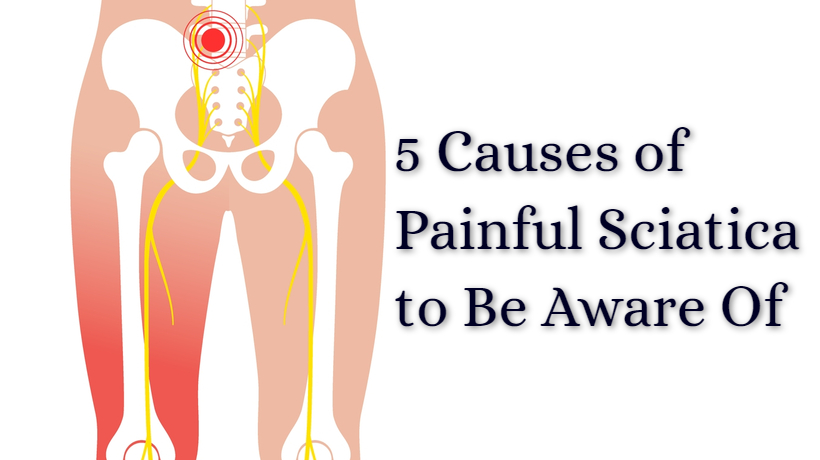According to Mayo Clinic, sciatica is typically one-sided pain that radiates along the path of the sciatic nerve, which branches from your lower back through your hips and buttocks and down each leg.
Harvard Health Publishing explains that the pain may be caused by compression or irritation of the nerve, usually as the result of friction with a disc, bone, joint, or ligament. This causes inflammation, and therefore sensitivity in the tissues and nerves.
There are several possible causes of damage or pinching of the sciatic nerve, or the nerves connected to it. Below are five, as outlined by Harvard Health Publishing.
Herniated disc
One of the most common causes of sciatica is a herniated disc in the lower spine.
Spinal discs can be found between the spine’s vertebrae. They act as cushions to keep the bones from touching or rubbing against each other. Spinal discs also absorb pressure that would otherwise fall on the vertebrae when we run, sit, twist, lift, fall, or collide with other people or objects.
A herniated disc, also called a slipped disc, occurs when the “jelly-like filling” in a spinal disc breaks through the outer shell and bulges through the tear, pressing on a nearby nerve. This pressure sends abnormal signals to the brain, causing sciatica pain.
Spinal stenosis
Spinal stenosis is the narrowing of the spinal canal, which protects the spinal cord and nerves that run along the spine. When this narrowing occurs, nerves can be compressed, causing pain.
Typically, spinal stenosis is caused by a combination of these conditions, which increase in occurrence with age:
- degeneration of the disc
- osteoarthritis of the facet joint
- thickened ligaments
In other cases, a person can be born with spinal stenosis as a result of a rare condition. More often, there might be a slight narrowing of the spinal canal, called congenital stenosis, which can cause symptoms of stenosis with even mild age-related changes. As a result, people with congenital stenosis can experience symptoms in their 40s or earlier. Other causes of narrowing of the spinal canal are injuries, tumors, and thickened ligaments.
Spondylolisthesis
Spondylolisthesis occurs when one spinal bone slips forward in relation to the bone stacked below it. When the L4 vertebra moves over the L5 vertebra, a kink in the spinal canal can form, leading to nerve pressure and sciatica.
Often, when teenagers seek medical care as the result of persistent back pain, spondylolisthesis is found. For young people, the cause is usually a severe injury or congenital defect. In adults, the most common cause is osteoarthritis.
Trauma
The sciatic nerve itself can be damaged in an injury or accident affecting the buttock, hamstrings, or muscles at the back of the thigh. Sciatica as the result of trauma to the sciatic nerve can be caused by falls, car accidents, or sports injuries.
Pregnancy
During pregnancy, particularly the second and third trimesters, the shifting of weight and loosening of ligaments — as well as the growing baby — can put indirect pressure on the sciatic nerve.
For more information on sciatica, including symptoms and prevention, visit www.MayoClinic.org.



